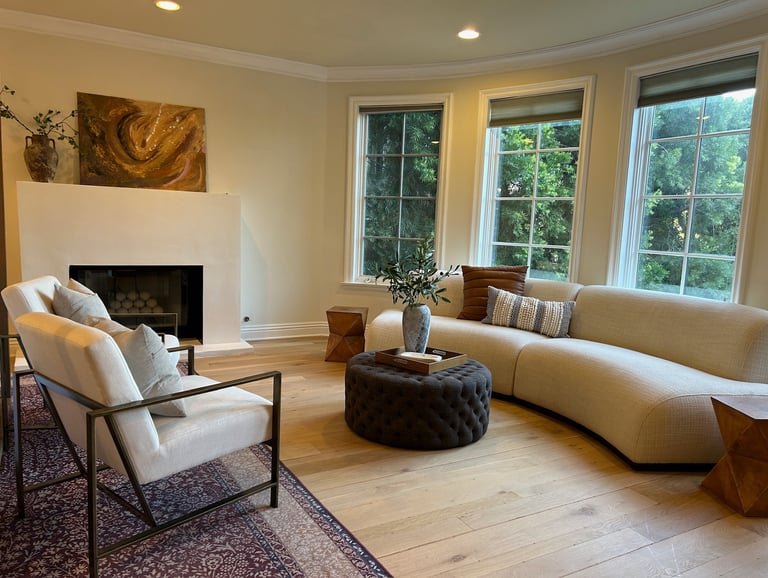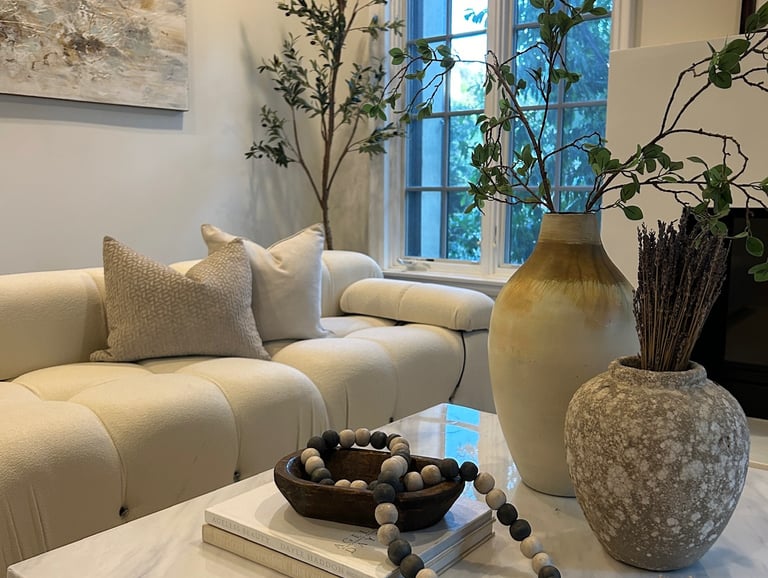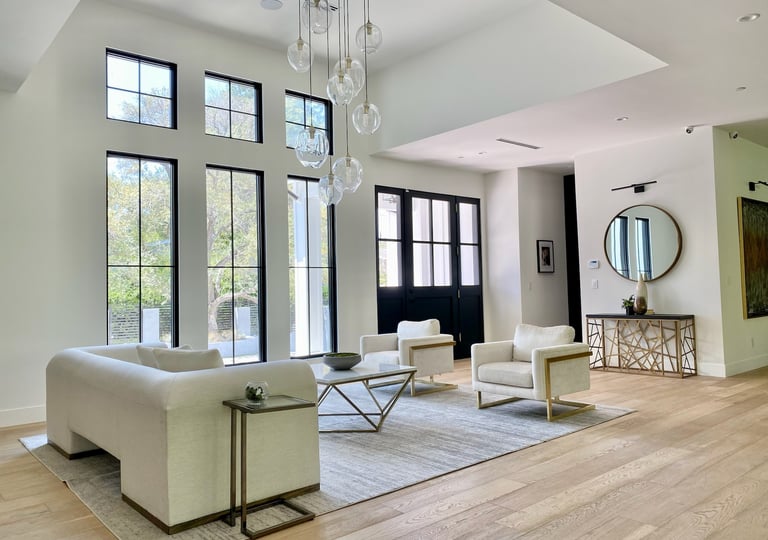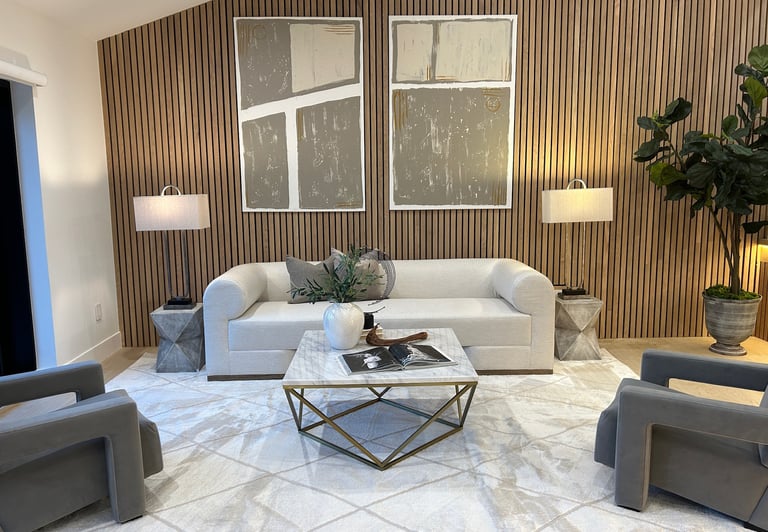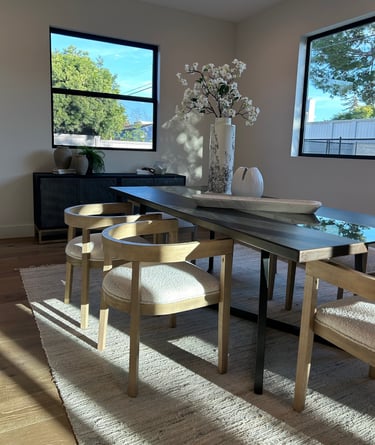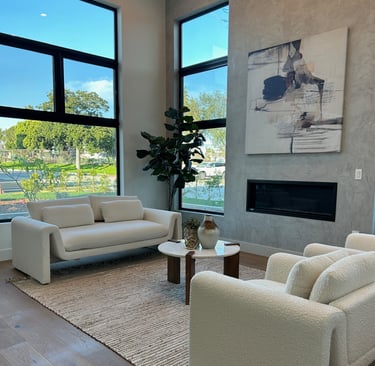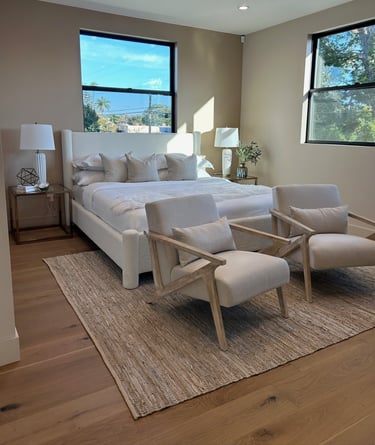
How to Stage a Home to Sell: Furniture and Accessory Tips for Maximum Impact
Transform your home into a buyer’s dream with these expert staging tips. Learn how to declutter, choose neutral furniture, and use strategic accessories to highlight each space’s potential. From key areas to focus on to must-have decor items, discover how to create a warm and inviting atmosphere that helps your home sell faster and for more.
HOME DECOR
12/20/20246 min read
Understanding the Importance of Home Staging
Home staging is an essential step in the selling process, significantly impacting both the speed and price at which a home can be sold. Effective staging transforms a property, enabling potential buyers to envision themselves living in the space. This process goes beyond mere aesthetics; it creates an emotional connection between the buyer and the home. Research indicates that staged homes tend to sell 73% faster than non-staged properties, underscoring the necessity of this practice in today’s competitive real estate markets.
The psychological aspects of home staging play a pivotal role in this success. Buyers often make snap judgments within the first few seconds of viewing a home. A well-staged environment not only highlights the property’s best features but also minimizes flaws. Utilizing neutral colors, strategic furniture placement, and tasteful accessories can make spaces appear larger and more inviting. This careful curation enables buyers to visualize their potential lifestyle within the walls of the home, enhancing their emotional response and increasing their likelihood of making an offer.
Market trends consistently show that the demand for staged homes is rising. As buyers become more discerning, they expect properties to meet certain aesthetic standards before considering a purchase. In fact, many real estate professionals now advocate for staging as a standard practice rather than an optional enhancement. The investment in staging can lead to higher selling prices, as well-maintained and attractively presented properties command more interest and can foster competitive bidding situations. Overall, staging a home effectively not only showcases its potential but also enhances its marketability, fulfilling both seller and buyer expectations in a dynamic real estate environment.
Key Furniture Arrangement Tips
Arranging furniture effectively is essential for creating a welcoming environment in a home. Proper furniture arrangement not only enhances the flow of each room but also showcases the property's strengths, making it appealing to potential buyers. One of the foremost tips in staging a home is to prioritize space. Ensure each room has an open and inviting pathway that encourages movement. This can be achieved by positioning larger furniture pieces away from high-traffic areas, allowing for easy navigation and setting a relaxed atmosphere.
Optimizing layouts according to the room type is also key. For instance, in living rooms, consider placing seating in a way that promotes conversation, such as arranging sofas and chairs around a central coffee table. In bedrooms, the bed should be the focal point, ideally facing the door, with nightstands placed symmetrically on either side. This arrangement not only uses scale effectively but also engenders a feeling of symmetry and balance, which is pleasing to the eye.
Utilizing scale appropriately is another critical factor in furniture arrangement. Oversized furniture in a small space can make the room feel cramped, while too many small pieces can lead to clutter. Buyers often look for spaciousness, so select furniture that complements the dimensions of each room. Additionally, creating focal points can direct attention and enhance the aesthetic appeal. Elicit interest by placing a striking piece of art, a unique coffee table, or decorative lighting in prominent locations.
Finally, decluttering is imperative. A clutter-free environment allows potential buyers to visualize their own belongings in the space. By strategically placing essential furniture while eliminating excess items, homeowners can dramatically emphasize their property's best features, making it a key element in the home staging process.
Accessorizing for Maximum Impact
When staging a home for sale, the right accessories can significantly enhance the overall appearance and feel of a space. Choosing décor items, artwork, and textiles that complement the home’s style while maintaining neutrality is essential to appeal to a broad spectrum of potential buyers. A well-curated selection of accessories can help to convey a lifestyle that prospective homeowners aspire to, creating an ambiance that invites them to envision themselves in the space.
One key aspect of selecting accessories is the coordination of color schemes. Opting for a palette that is both cohesive and understated—utilizing soft neutrals and light pastels—can make rooms feel more inviting. Consider integrating a few bolder accent pieces to create focal points without overwhelming the senses. These accents can enhance various areas of the home while keeping the overall aesthetic balanced. Additionally, using mirrors strategically can create illusions of larger, brighter spaces, which is particularly beneficial for smaller rooms or those with limited natural light.
Another effective method for adding warmth and life to a staged home is through the inclusion of plants. They not only provide touches of color and texture but also help to purify the air and create a more inviting atmosphere. Choose easy-to-care-for varieties such as succulents or snake plants, which require minimal maintenance and can thrive in various lighting conditions. It is vital, however, to strike a balance in decoration; too many items can lead to a cluttered appearance that may deter potential buyers. Ensuring each accessory serves a purpose while contributing to the home’s overall ambiance will make the space feel curated and inviting.
Final Touches and Preparation for Showings
As prospective buyers step inside a home, their first impressions can significantly influence their feelings towards making a purchase. Therefore, the final preparations and touch-ups before showings are crucial. Begin with a thorough cleaning of the entire space. This includes dusting surfaces, vacuuming carpets, and scrubbing floors. Attention to detail is essential; ensure that windows are spotless to maximize natural light, which can make rooms feel larger and more inviting.
Creating an inviting atmosphere is another vital aspect of staging a home for sale. Proper lighting can transform the mood of a space. Aim to have a combination of ambient, task, and accent lighting. Turn on all lamps and overhead fixtures to create a warm glow during showings. If possible, use dimmers to adjust the light intensity according to the time of day. Furthermore, consider incorporating scented candles or fresh flowers. Natural scents, such as vanilla or citrus, can evoke positive emotions and help buyers envision themselves residing in the home.
While ensuring the home feels lived-in, it is essential to maintain an uncluttered and pristine environment. Remove personal items, such as family photographs, to help potential buyers visualize their own lives in the space. However, keep a few carefully selected accessories or pieces of furniture to give the home character. Regularly maintain the staging elements throughout the selling process; this includes adjusting any disarray and preserving cleanliness in between showings.
Lastly, for open houses or private showings, be prepared to make quick adjustments. Set up a checklist prior to each showing that includes tasks such as fluffing pillows, refreshing fragrances, and rearranging decorative items. These small touches can contribute significantly to a lasting impression on potential buyers and can be the key to a successful home sale.
Suggested Staging Furniture and Accessories
Here are some versatile furniture and decor ideas to include in your staging:
Neutral Sofa – A modern or mid-century style couch in a light tone. [Sofa]
Accent Chairs – Add character with one or two statement chairs in the living room. [Chair]
Dining Set – A simple dining table with matching chairs. [Table] [Chairs]
Area Rugs – Neutral rugs that ground each room while adding texture. [Rug]
Throw Pillows and Blankets – Soft textures in neutral or muted tones. [Pillows] [Blanket]
Large Mirror – Great for small spaces to reflect light. [Mirror]
Abstract Art – Keeps the space modern yet non-specific. [Art]
Plants – Small indoor plants or faux greenery. [Plant]
Lighting – Stylish table lamps or standing lamps for ambiance. [Lamp]
Outdoor Planters – Add charm to the front porch or patio area. [Planters]
